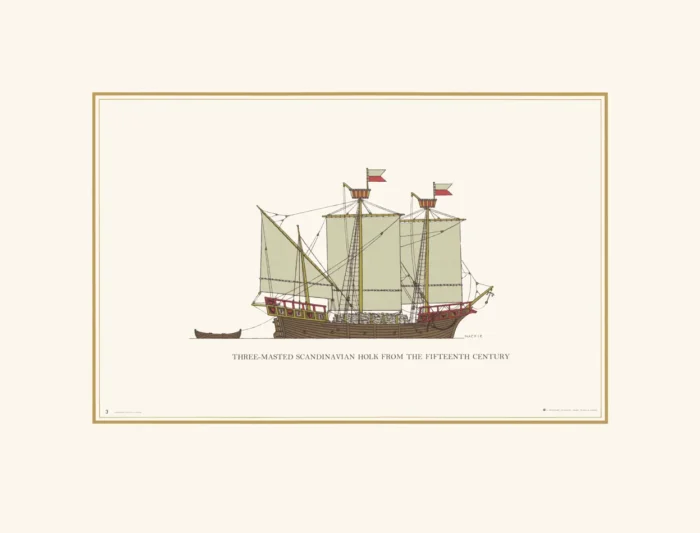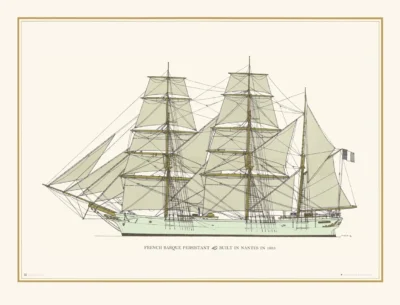15th Century Three-Masted Scandinavian Holk
£15.00
Holk: (hulk) medieval transport vessel of the Low Countries (scroll down for Description) (scroll down for a more detailed Description)
Published 1963 by Hugh Evelyn; drawn by Swedish marine artist Gordon Macfie (1910-1971) for Tre Tryckare of Gothenburg (who retain copyright)
Print size: c 44 cm x 33.5 cm [17½″ x 13″] (may vary slightly from printers’ cut 50 years ago)
Printed on light orange (RGB c. fdf1dd) cardstock c. 300 g/sm2
Print is LARGE size – shipping is the same for 1 to 10 prints (based on largest print size in your order) – see Shipping & Returns
In stock
Description
A hulk (or “holk”) was a type of medieval sea craft, a technological predecessor of the carrack and carvel. The hulk appears to have remained a relatively minor type of ship apparently peculiar to the low countries of Europe where it was probably used primarily as a river or canal boat, with limited potential for coastal cruising. The name hulk may come from the Greek word holkas, meaning a towed boat, which would be consistent with the use of the hulk as a river barge. The word hulk also has a medieval meaning of “hollowed-out” or “husk-like” which is also apposite for the shape of the basic hulk. In the fourteenth century the hulk began to develop until it was able to rival the cog as a major load carrier in the medieval economy. Whether this was a consequence of a perception of the cog’s shortcomings or a result of a shift in the economic geography of Northern Europe towards the Dutch low countries is not easy to discern. By the 15th century, the hulk was replaced by the caravel.
Additional information
| Weight | 0.0292 kg |
|---|---|
| Dimensions | 44 × 44 × 33.5 cm |





